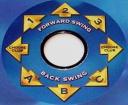Angled straight shots — choose C1 over A3
By Deprecated: Function the_author_posts_link was called with an argument that is deprecated since version 2.1.0 with no alternative available. in /var/web/site/public_html/wp-includes/functions.php on line 6121 Golden Tee Fan • Category: Using the track ball • • Leave a Comment (0)If you’ve read up on some of my articles discussing the anatomy of the trackball (like this one), then you know that you can sometimes run into issues shooting forwards towards 3. Hitting a “spinny” C3 certainly helps off the tee, and using thumbs for putting out to 3 can help when on the green. But what about those straight 180-shots where you want to keep your shot straight to maximize distance, but need to shoot at an angle to do so?
Hopefully you’ve learned by now that if the plane of your backswing doesn’t match the plane of your follow-through, you are losing distance. When you combine that with the fickle nature of shots out to 3, you can see your distance drop even more. Not only that, but for right-handers, it’s awkward to push a shot out away from your body, whereas you’re more comfortable shooting across your body instead.
Let’s look at a couple examples where you have some options to put this into practice. First, consider Jackrabbit #4:

Unless you have the back tee with a headwind, you should be trying to carry left to the second fairway. It’s offset a bit, so you can rotate left twice and play an A3-type shot, or you can rotate just once left and play a C1-type shot instead. Do the latter — it feels more comfortable and you’ll have more distance.
This also applies to Bear Lodge #5.

Again, unless you have the back tee, a good play is to the rough straight ahead to the left of the sand. With an offset look, you can either angle a straight shot to the left, or to the right. I always choose to line my shot up so that I am shooting a C1-type shot out to the left, because I’ll get more carry and distance to give me a shorter approach into this green.
Now let’s look at some exceptions, such as Coconut #15:

To hit the shortcut patch out to the right, your best shot is to angle a shot left-to-right (an A3-type shot). Why? Because there’s water to the left, and a grassy hill to the right that can sometimes help hold that patch. If you play the C1 shot into this and the wind is doing anything except blowing right, you’ll hop right over and get wet. So unfortunately, most of the time I’m having to attempt as straight an A3 shot as I can to end up there.
You’d also choose the A3-type shot if the offset is very small this direction and very large if you rotate right to consider a C1 shot. I just like to favor the C1 shot whenever it’s a toss-up and I need to maximize my distance. So if you’ve noticed inconsistencies and shorter distances shooting out to 3, see if you can rotate right and play the shot out to 1 instead!




